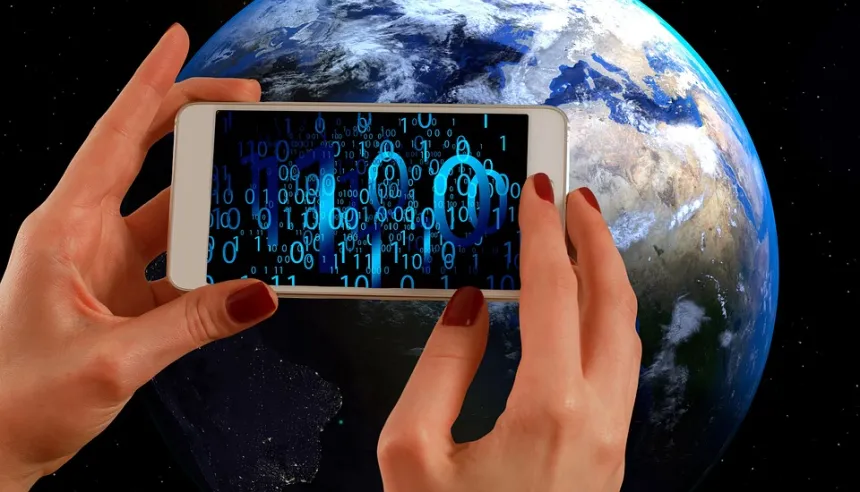Immersive technologies, specifically Augmented Reality (AR) and Virtual Reality (VR), are dramatically transforming real-time web applications by providing interactive, engaging, and immersive experiences. These technologies are breaking new ground in various sectors, including gaming, education, healthcare, and retail. This article delves into how AR and VR are shaping the future of real-time web applications, their benefits, and the challenges they present.
1. Enhanced User Interaction Through Augmented Reality
Augmented Reality (AR) overlays digital information onto the physical world, creating interactive experiences that blend virtual and real elements.
- Pros: AR enhances user interaction by providing contextual information and interactive elements in real time. For example, AR applications in retail allow users to visualize how furniture would look in their home before making a purchase, improving the shopping experience. AR also enriches educational applications by overlaying informative content onto real-world objects, making learning more engaging and effective.
- Cons: Implementing AR in real-time applications requires advanced hardware, such as AR glasses or mobile devices with high-performance capabilities. Additionally, the development of AR applications can be complex, involving challenges related to object recognition, tracking, and spatial awareness.
2. Immersive Experiences with Virtual Reality
Virtual Reality (VR) creates fully immersive digital environments that users can interact with as if they were physically present.
- Pros: VR offers a highly immersive experience, making it ideal for applications such as virtual training, simulation, and entertainment. For instance, VR training programs can simulate hazardous environments for safe, hands-on learning. In gaming, VR provides a more immersive and interactive experience, allowing players to engage with virtual worlds in ways that traditional gaming cannot match.
- Cons: VR applications require specialized hardware, such as VR headsets and motion controllers, which can be costly and limit accessibility. Additionally, developing high-quality VR content involves significant resources and expertise, including 3D modeling and environmental design.
3. Real-Time Data Visualization in AR and VR
Both AR and VR technologies excel in visualizing complex data in real time, providing users with intuitive and interactive representations.
- Pros: AR can overlay data visualizations onto physical objects or environments, allowing users to interact with and explore data in context. VR, on the other hand, can create immersive data environments where users can manipulate and analyze data from multiple perspectives. These capabilities enhance data comprehension and decision-making in fields like data science, engineering, and finance.
- Cons: Creating real-time data visualizations in AR and VR can be technically demanding. Ensuring that data is accurately and promptly reflected in the immersive environment requires efficient data processing and integration. Moreover, users may experience information overload if visualizations are not designed with clarity and usability in mind.
4. Collaborative Work and Remote Interaction
AR and VR are revolutionizing remote collaboration and interaction by creating virtual workspaces and meeting environments.
- Pros: VR enables users to work together in a virtual office or meeting room, regardless of their physical location. This capability is particularly beneficial for remote teams and distributed organizations, facilitating collaboration, brainstorming, and project management in a shared virtual space. AR can also enhance remote support by allowing technicians to see and interact with the physical environment through the eyes of a remote expert.
- Cons: Implementing collaborative AR and VR solutions requires significant investment in technology and infrastructure. Users must have compatible hardware and software, and network bandwidth must be sufficient to support real-time interactions. Additionally, maintaining a seamless and effective collaborative experience across different devices and platforms can be challenging.
5. Personalization and User Customization
AR and VR technologies offer opportunities for personalized and customizable user experiences in real time.
- Pros: AR and VR applications can adapt to individual user preferences and behaviors, providing personalized content and interactions. For example, in a virtual store, users can customize their shopping experience by selecting different product views or layouts. In VR gaming, players can personalize their avatars and game environments, enhancing engagement and satisfaction.
- Cons: Personalizing AR and VR experiences requires collecting and processing user data, which raises privacy concerns. Ensuring that personalization does not lead to data misuse or compromise user privacy is crucial. Additionally, designing customizable experiences that cater to diverse user preferences can be complex and resource-intensive.
6. Advancements in Hardware and Software
The development of AR and VR technologies is closely linked to advancements in hardware and software.
- Pros: Innovations in hardware, such as more powerful AR glasses and VR headsets with improved resolution and tracking capabilities, enhance the quality and realism of immersive experiences. Advances in software, including more sophisticated development tools and platforms, simplify the creation of AR and VR applications and improve their performance.
- Cons: Keeping up with rapid advancements in AR and VR hardware and software can be challenging for developers and businesses. Regular updates and compatibility issues may arise as new technologies are introduced, requiring ongoing investment and adaptation.
7. Ethical and Social Considerations
The adoption of AR and VR technologies also brings ethical and social considerations that must be addressed.
- Pros: AR and VR have the potential to democratize access to information and experiences, providing opportunities for education, training, and entertainment that were previously unavailable. For instance, VR can offer immersive cultural experiences and virtual museum tours to users around the world.
- Cons: Ethical concerns include the potential for AR and VR to contribute to digital addiction or disconnection from the real world. Additionally, there are risks related to data security, user privacy, and the potential for misuse of immersive technologies. Addressing these concerns requires careful consideration and the implementation of appropriate safeguards.
Conclusion
Augmented Reality (AR) and Virtual Reality (VR) are driving significant advancements in real-time web applications, offering immersive, interactive, and personalized experiences. While these technologies present numerous benefits, including enhanced user engagement and innovative data visualization, they also come with challenges related to hardware requirements, privacy, and ethical considerations. As AR and VR continue to evolve, they hold the promise of transforming various industries and creating new opportunities for user interaction and engagement. Balancing innovation with responsible implementation will be key to maximizing the potential of AR and VR in real-time web applications.
To stay up to date with the latest news and trends, To learn more about our vision and how we’re making a difference, check out OC-B by Oort X Media.




